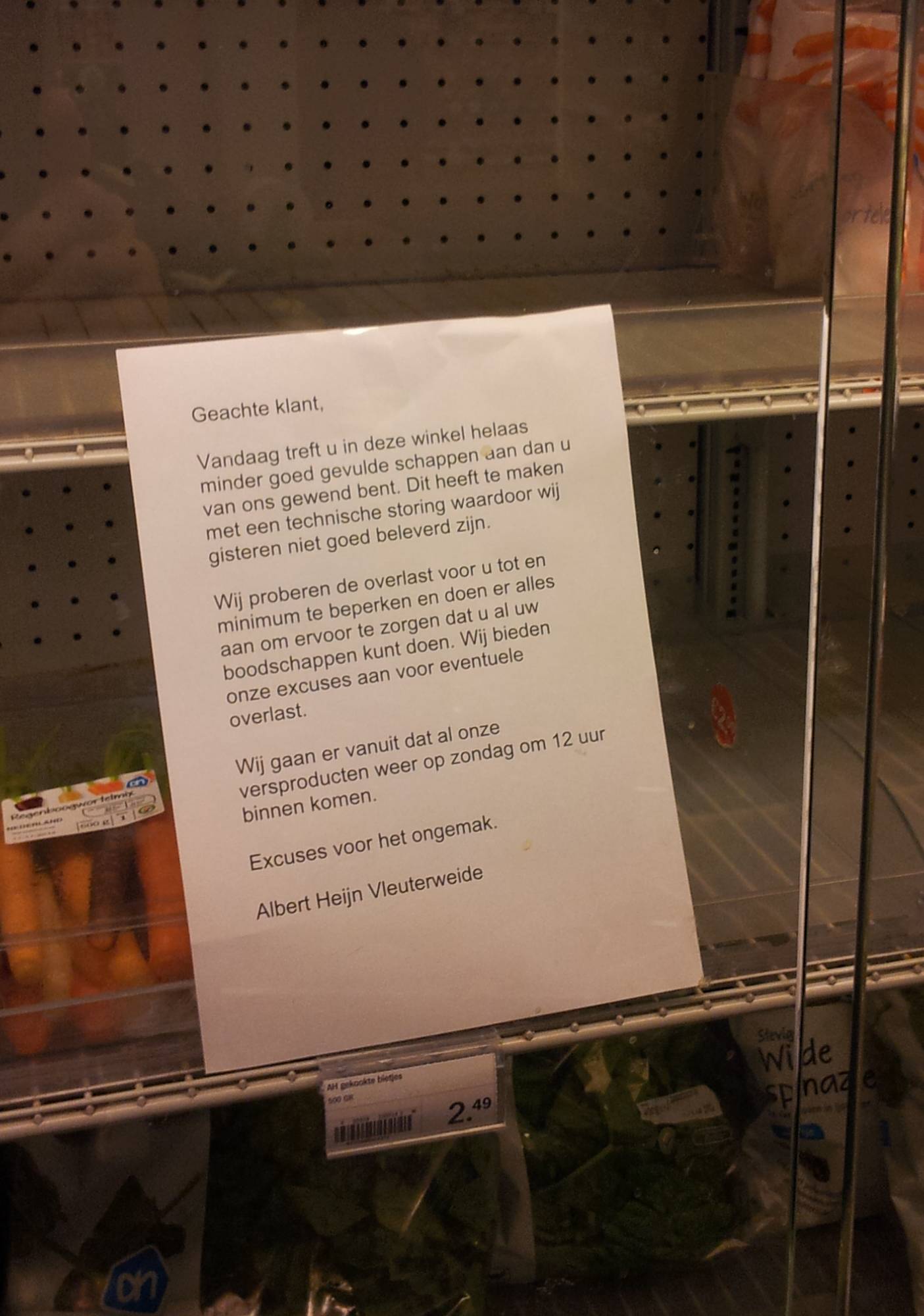Information sharing to minimize the negative impact of IT failures
A few weeks ago we went grocery shopping at the Albert Heijn. When entering the Albert Heijn we witnessed empty shelves due to a computer failure. Great!
Disruptions in supply chains
Information technology enables long supply chains, such as in the retail industry. To enable that supply chain many IT systems are needed. These IT systems have lots of interdependencies. In case one of the IT systems breaks down other IT systems get disrupted too. An IT failure therefore immediately disrupts the rest of the chain, as shown by the grocery shopping example. Such disruptions are increasingly impactful given the digitalization of the world and very annoying for customers.
Banking also having long chains with IT systems
Banks also have complex networks of IT systems. When one of the IT systems breaks down, people are not able to use financial services. Who isn’t familiar with the annoyance of unable paying by banking card in a shop, due to a malfunctioning payment network?

Root-cause of the problem
The IT systems in the network are managed by many different IT teams. These teams need to share information to prevent and resolve IT failures. In many cases that information is not or scarcely shared. Currently little is known about these information sharing dynamics regarding IT failures.
Providing answers
To understand the dynamics between IT teams during IT incident handling I studied a large IT service network at a multinational bank, during my PhD. During the study I identified three networks that impacts the effectiveness of IT incident handling, the social network, the contractual network and the technical network. In each of these networks I identified
a set of information that needs to be shared between IT teams.
Results accepted by the scientific community.
The research has resulted in a scientific paper that was submitted last year to the Journal of Software Evolution and Process. The results were innovative enough for leading experts in the scientific community. I’m proud to announce that the paper has been accepted and released in December 2014. You can access the paper via this link. If you don't have access ask for a copy by email.
Next steps
As next step we plan to perform an experiment at a large financial institute to speed up IT incident handling. We expect that sharing the identified information helps IT teams to prevent and resolve IT failures faster.
